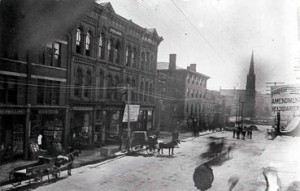The United States was a hard drinking country. In the mill towns, there were bars and saloons on every corner. Earlier many farmers had made their fortunes distilling their grain into liquor and shipping to Pittsburgh and Cleveland.
The leaders of the Prohibition movement were alarmed at the drinking behavior of American and they were concerned that the culture of drink among some sectors was spreading. Prohibition in the United States was a measure to reduce drinking by eliminating the businesses that manufactured, distributed and sold alcohol beverages. The 18th Amendment to the Constitution took away the license to do business from these operations.

The best evidence available to historians shows that consumption of beverage alcohol declined dramatically under prohibition. In the early 1920’s consumption was about 30 per cent of the pre-prohibition level. Consumption grew somewhat in the last years of prohibition, as illegal supplies of liquor increased and as a new generation of American disregarded the law and the self-sacrifice that was part of the prohibition movement. Nevertheless it was a long time after repeal before consumption rates rose to their pre-prohibition levels. In that sense, prohibition “worked.”
Pictured above is downtown New Castle shortly before the enactment of 18th Amendment. Note the “Prohibition Amendment Headquarters” at the right of the photo.
Source: Temperance & Prohibition, Department of History, The Ohio State University
